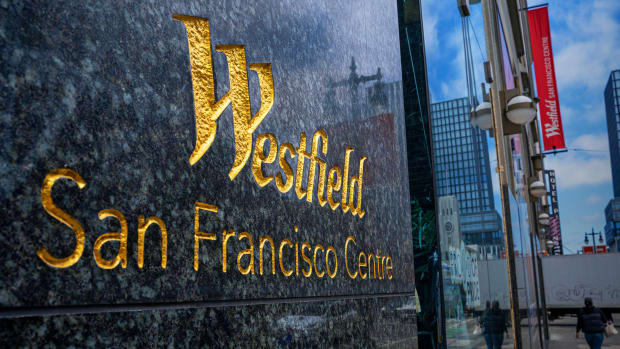
Union Square in San Francisco has traditionally been the crown jewel of the city’s bustling shopping scene, the place where tourists from nearby hotels would flock to Apple’s flagship location and luxury destinations like Bloomingdales and Saks Fifth Avenue. The square’s Christmas tree and skating rink were the West Coast’s answer to Rockefeller Center in New York.
However, strip away the spectacle and the real place to be, at least by industry standards, was the Westfield San Francisco Centre. The mall was the epitome of first class management. Everything from the movie theater and restaurants to a mix of specialty apparel and high end department stores screamed competence and quality.
Which makes Westfield’s recent decision to abandon the mall all the more shocking. Normally, a mall on the down side would gradually deteriorate: escalators would no longer work, the floors would get brown and grimy, and the only retailers left on the directory would be McDonald's and stores that hawked fake gold jewelry.
But step into San Francisco Centre today and the place still looks like a palace. So what happened?
The Problem With Department Stores
As usual, when it comes to city downtown areas of late, pundits point to rising crime and quality of life issues: organized groups of thieves, random shoplifting, the homeless, drug users, mentally ill.
But that’s always been life for retailers along Market Street in San Francisco. Blaming Westfield’s decision solely on crime may be politically convenient but masks the true reasons why all traditional malls, including downtown locations, are struggling.

Let’s start with the fundamental business model for traditional malls, the idea that a department store serves as the anchor tenant for the property. Such an anchor signs a long term lease and pays for most of the property’s operating costs. Plus that anchor serves as a welcome sign for other smaller retailers to sign up.
But department stores, which have long prided themselves as the purveyors of affordable American fashion, have been struggling for decades now, as consumers flock to Target Corporation (TGT) and H&M for cheap chic and to Amazon Inc. (AMZN) for price. Coresight Research estimates Amazon alone sold $50.6 billion in clothing, footwear and apparel accessories in the United states last year.
What’s fairly new is the struggles of luxury department stores like Nordstrom Inc. (JWN), Neiman Marcus, and Saks Fifth Ave.
Traditionally, luxury retailers have been immune to economic downturns because its core customers — people with lots of money — tend to spend money regardless of things like inflation.
But things have changed since the pandemic, and Nordstorm in particular has floundered of late. The company predicts annual revenue this year will fall 4% to 6%. Nordstorm has completely pulled out of Canada and the only stores it plans to open are the lower-priced and smaller format Nordstrom Rack.
In fact, many traditional mall retailers, including Foot Locker Inc. (FL) and Barnes & Noble (BNED) are going smaller, experimenting with formats that take up much less space in places like suburban lifestyle centers.
Broken Business Model
Department stores take up a lot of space in malls, which means the property is too heavily reliant on them to succeed. For example, Nordstrom occupied 312,000 square feet in San Francisco Centre, more than a quarter of the property’s total space. Without Nordstrom, the mall’s occupancy rate plummets to 55% leased versus the average 93% for Westfield properties.
So it’s no accident that Westfield decided to abandon San Francisco Centre after Nordstrom recently said it plans to close in August after 35 years.
Given Nordstrom’s high end reputation, Westfield perhaps miscalculated that San Francisco Centre would avoid the fates of malls that depended on middling department stores like JCPenney and Sears as anchors. But a luxury department store is still a department store and the format is really struggling right now.
There’s no doubt that factors like crime and inflation play a role with San Francisco Centre’s struggles. But the underlying model of the traditional mall, in which it depends on a diminished format to anchor the property, is essentially broken.







